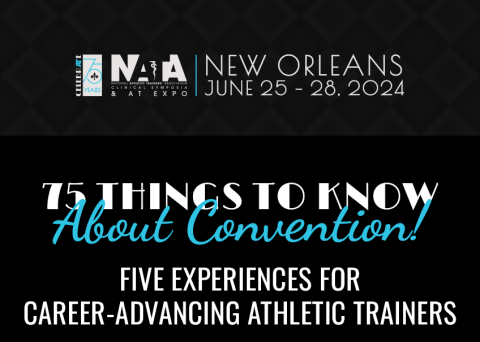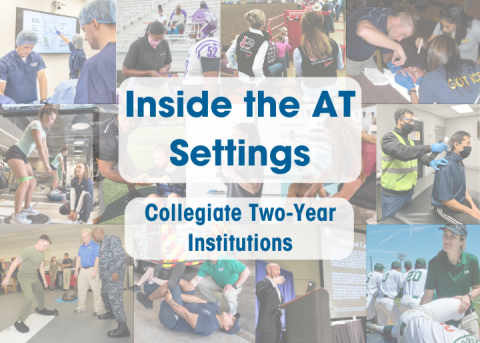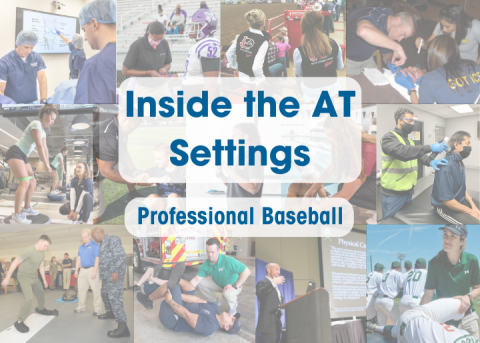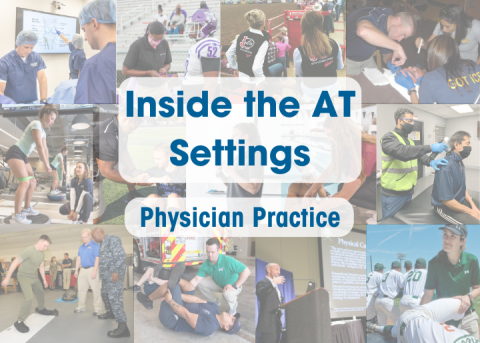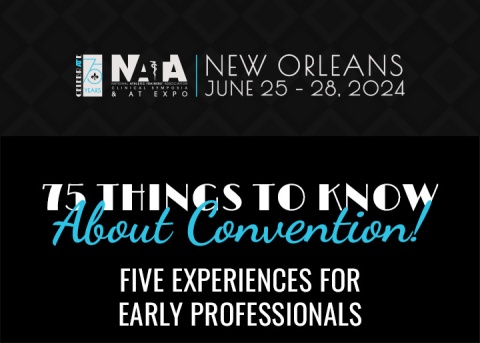
In honor of Women’s History Month this March, NATA is highlighting women who are working to advance the athletic training profession through research.
For Riana Pryor, PhD, ATC, her encounter with research in college provided the foundation for her sports medicine research career, now advancing the understanding of extreme weather conditions in patients.
As an undergraduate student at the State University of New York at Brockport, Pryor’s first research experience was collecting data for her kinesiology professors.
“I fell in love with the idea of being able to ask and answer impactful clinical questions that will benefit the health and safety of others,” she said. “Since that learning experience, I knew that research would be a part of my career.”
Currently working as assistant professor and director of the Hydration, Exercise and Thermoregulation Laboratory at the University of Buffalo, Pryor said research has become the primary focus of her career. Below, she shares some of the ins and outs of her research on extreme environments.
What led to the creation of the research project, “Lasting Effects of Exercise in Heat on Subsequent Exercise and Thermoregulation,” for which you received your 2014 NATA Foundation Doctoral Grant?
The impact of extreme environments on human physiology is fascinating to me. My long-term career objective is to improve the health and safety of physically active populations in these environments, such as hot and humid conditions. Aligning with this goal, we sought to compare thermoregulatory responses across simulated football preseason heat acclimatization practices. Our goal was to test the hypothesis that individuals would experience exacerbated physiological strain during a second practice session in the heat compared to a first session during a simulated two-a-day practice, as well as on the second day of practice compared to the first day.
What have you discovered in your research?
We confirmed that multiple exercise sessions should not take place on the first day of football preseason practice, and that athletic trainers should be ready to recognize and treat heat-related illnesses, especially during football preseason practices. In line with our hypotheses, simulated football practice in the heat resulted in greater physiological strain during a second practice session compared to the first practice session on the same day, and that day two of preseason resulted in greater heat strain than day one. Only three-fourths of participants could complete the second practice session on day one, with participants needing to stop due to a dangerously high body temperature, significant symptoms of heat-related illnesses or fatigue. This is compared to all participants successfully completing an identical practice in the morning that day.
How does the involvement of women in research advance the AT profession?
Athletic trainers are innately curious about the human body and strive to determine and implement the best health care possible for their patients. As a profession, we can best move forward and advance patient health care when all voices, including women, have a seat at the table and are encouraged to contribute to science. Women with a passion for research should be fully supported to focus their careers on pursuing their research interests, ultimately enhancing patient health care and advancing the athletic training profession.
What’s next in your research?
My team seeks to inform athlete, military and worker recommendations for heat strain prevention by comparing prevention, treatment and intervention strategies across a broad spectrum of individuals, including a focus on female military members and older workers. Many policies and recommendations that aim to protect physically active populations from excessive environmental strain were created and tested in a primarily young, healthy population. With a large portion of the population not fitting into these categories, and with a projected increase in the number and severity of extreme weather events, my research informs best practice recommendations to ensure that a wide variety of individuals can be healthy and safe in extreme environments.
What advice do you have for ATs interested in sports medicine research?
In the words of Mr. George Feeny, “Dream. Try. Do Good.” Seek out the opportunities that interest you the most. Research can mean discovering a new rehabilitation strategy for a post-op patient, interviewing athletic trainers to understand their employment perceptions and needs, creating a screening tool to determining the likelihood of musculoskeletal injury, or implementing a new concussion protocol on a sideline. In my lab, it means optimizing heat strain prevention, intervention and treatment strategies. This world can be a better place when you follow your passions.

